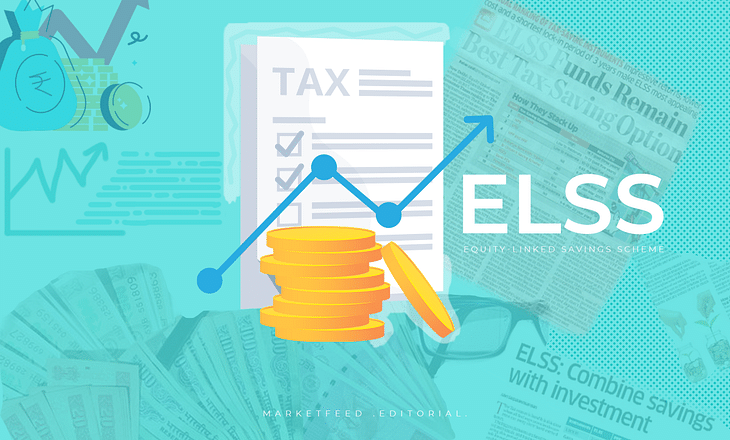Save Taxes with Equity Linked Saving Scheme (ELSS)!

In order to achieve financial freedom and secure future goals, it is always essential to invest in different types of asset classes and diversify your portfolio. At the same time, proper tax planning should be an important part of your financial career. In India, there are various investment schemes that help in reducing our tax liabilities and promote saving. In this article, learn more about a tax-saving scheme known as ELSS.
What is ELSS?
An Equity-Linked Savings Scheme or ELSS is a category of mutual fund that helps in saving taxes. It provides the dual advantage of wealth creation and tax saving under Section 80C of the Income Tax Act. By investing in ELSS mutual funds, you can claim a tax exemption of up to Rs 1.50 lakh from your annual taxable income. You will be able to save up to Rs 46,800 a year in taxes.
ELSS funds invest at least 65% of their portfolio in equity or equity-linked securities such as shares. The remaining portion will be allocated towards fixed-income securities such as bonds. These funds come with a mandatory lock-in period of three years. This means that you can withdraw your ELSS investment only after three years from the date of investment. There are no provisions to make a premature exit. However, ELSS has the lowest lock-in period when compared to other tax-saving schemes such as National Pension Scheme (NPS), Public Provident Fund (PPF), and Fixed Deposits (FDs). At the end of three years, you can withdraw 100% of your ELSS investments. You can continue to invest in this scheme even after the completion of the lock-in period.
ELSS provides the flexibility to invest via a Systematic Investment Plan (SIP) or through a lump sum. The returns generated from this scheme at the end of three years are considered as long-term capital gain (LTCG). Any LTCG above Rs 1 lakh will be taxed at 10%.
Why Should you Invest in ELSS Tax Saving Mutual Funds?
- Almost all ELSS funds allow you to start investing with as low as Rs 500. You need not accumulate a substantial amount to invest in these schemes. Moreover, there is no limit on how much you can invest in ELSS funds. You can also stay invested after the mandatory lock-in period of three years.
- The fund managers invest the entire ELSS investments in shares or securities of companies across different sectors and market capitalizations. Thus, there is an element of diversification in your investment portfolio. This is an important requirement for all long-term investments.
- It is seen that most people prefer to invest in ELSS via a SIP, as it allows them to invest in small amounts and create wealth in the long term. At the same time, you can avail tax benefits. SIPs help you get the benefit of purchasing the fund units across different market cycles. When the markets are bearish, you buy more units, while you purchase fewer units when the markets are bullish. Over time, the price for purchasing the fund units gets averaged out and turns out to be on the lower side. You will benefit from this when the markets rise, as you can obtain higher capital gains at the time of redemption.
Growth and Dividend Option
Similar to other equity funds, ELSS provides both growth and dividend options. In the growth option, investors get a lump sum (with returns) at the end of the three-year lock-in period. If you opt for the dividend option, you will get a regular dividend income from the ELSS investment amount (even during the lock-in period). It is recommended that if you are investing in ELSS funds just to save tax, you should always link it to a long-term goal. Thus, choosing the growth option will help you save taxes and accumulate great returns in the long run. Historically, ELSS has delivered ~12% returns over 10 years and more.
ELSS and New Tax Regime
The Union Budget 2020 proposed that taxpayers will be allowed to switch to a new tax regime, which would help them lower tax payments. They would be able to receive a higher post-tax income. However, those who opt for the new regime would not be able to avail any tax benefits and exemptions offered while investing in tax-saving instruments. Due to this factor, many reports are stating that ELSS could lose its popularity. More people might switch to the new tax regime and opt to stay away from investing in the scheme. The point is, ELSS would only be effective under the old regime of taxation.
As always, do your own research before investing in an ELSS fund. You must analyse the long-term performance of each fund, read about the fund manager’s investment approach, and find out how volatile it has been in the past. You can easily invest in ELSS or other tax-saving funds through platforms such as Coin by Zerodha and Groww.
Happy Investing!


Post your comment
No comments to display